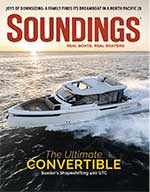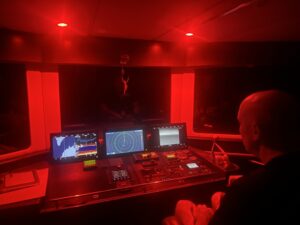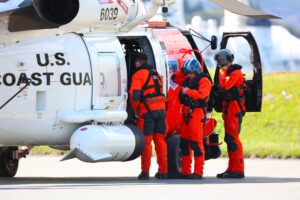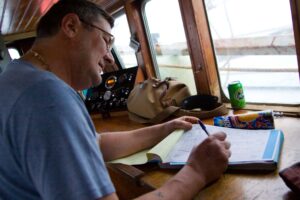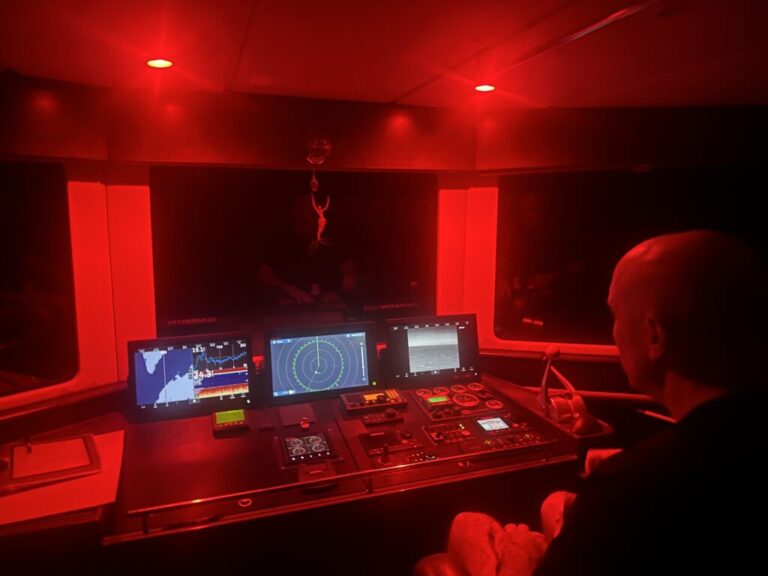
I will never forget the first time I hit another boat. I was 19 years old and sailing a Beetle Cat through the inner mooring field of Newport Harbor, trying to impress a girl who had come to visit. I was a first-year apprentice at the IYRS School of Technology & Trades. It was a beautiful warm June afternoon with blue skies and a 12- to 15-knot sea breeze filling in. I was sailing close-hauled but getting set unusually hard. Panicking because of how close I came to hitting a boat, I tacked without enough headway and put myself into irons. Sure enough, with no steerage, the bow of my Beetle Cat struck the stern of a moored 40-foot sailboat, cracking the V-shaped bumpkin that extended aft from the stern, which was home to the mizzen sheet block.
I was crushed and extremely embarrassed. I had just done the opposite of impressing that girl, and I knew I would need to get back to IYRS so I could call Clark, the program director, to report the incident. Clark came down to the campus and took me out on a launch to inspect the damage to the moored sailboat. As it turned out, he knew the boat’s owner and he told him IYRS would cover the cost of the repair. The owner told Clark it was no trouble as he had been meaning to replace the bumkin and had a new one already made, sitting on his workbench waiting to be installed.
As we motored back toward IYRS, Clark looked at me and smiled, asking why I was so glum. I quietly mumbled, “I can’t believe I hit that boat.” Then with a chuckle, Clark said, “Ehhh, it’s OK, Will. Everyone hits a boat eventually. It’s just going to happen. That’s a fact. Lucky for you, you hit a small boat, much better than being on a 100-foot boat and hitting another 100-foot boat.”
A few minutes later, we were tied up at the dock as Clark inspected the Beetle Cat. There was no damage, but he discovered that the centerboard trunk had swollen, not allowing the centerboard to lower more than a quarter of the way, which explained why I was being set so hard when trying to sail the Beetle Cat upwind through the mooring field.
Like breaking a bone or getting a detention, I was humbled by my first boating collision. That same summer, I launched my career as a professional mariner, working as a freelance deckhand on a few charter boats based out of Newport. Two years later, I was hired for permanent positions and moved up to the rank of mate. My understanding of the Rules of the Road—the internationally adopted guidelines for safe maritime operation—grew with my rising responsibilities. Five years went by and the boats I worked on got bigger. At the age of 25, I got my 100-ton USCG captain’s license with a sailing endorsement. To prepare for the licensing exam, I signed up for a course at Confident Captain, a Rhode Island-based training facility that offers courses and certifications for aspiring captains and mariners.
When I first started sailing for recreation, I was told that vessels under sail always have the right of way. That is incorrect. Before getting my license, when working as crew, I was told that being under sail did not provide an ultimate right-of-way. At the direction of the licensed superiors above me, I learned that vessels under sail have the right of way over vessels under power unless the opposing vessel is fishing, towing, law enforcement, has limited maneuverability, or is in distress. I was taught that a good rule of thumb is to steer clear of anything bigger than the vessel you are on if you find yourself in a crossing situation. Some mariners call this the rule of tonnage. At Confident Captain, I learned that the rule of tonnage is not an actual rule of the road but is a good concept to practice for safe navigation.
Fortunately, the Rules of the Road are well-written, easy to understand, and very accessible for anyone interested in learning them. There are 38 Rules of the Road, broken down into six parts and five annexes. Part A of the rules includes general definitions and defines vessel types. The rules define a sailing vessel as a vessel operating under sail alone. That means a vessel with sails set and an engine running qualifies as a vessel under power. Part B includes the steering and sailing rules which define who gives way to who and what actions may be required by the give-way and stand-on vessels. The definitions fall into a pecking order under rule 18, which lists who has right of way. At the top is NUC, a vessel not under command, which is a vessel that has an exceptional circumstance (maybe broken down or limping home). The NUC is closely followed by RAM, a vessel restricted in her ability to maneuver, and CBD, a vessel constrained by draft. The order then continues with fishing, sailing and finally, power-driven vessels.
Taking the time to learn and understand the Rules of the Road reveals that a vessel under sail is second to last on the list of vessels that have the right of way. Over the last 20 years, I have been involved in a few more collisions, all minor and on the racecourse, but none while I was at the wheel. I have seen many terrible collisions, and in my opinion, 99 percent of them could have been avoided. No matter where I am, if I find myself on a potential collision course with another vessel—even if I am sure I have the right of way—I mentally prepare a plan to avoid a collision because two wrongs don’t make a right.
To learn more about collision avoidance, visit the Amalgamated International & U.S. Inland Navigation Rules on the USCG website (https://www.navcen.uscg.gov/navigation-rules-amalgamated) .
This article was originally published in the March 2023 issue.

